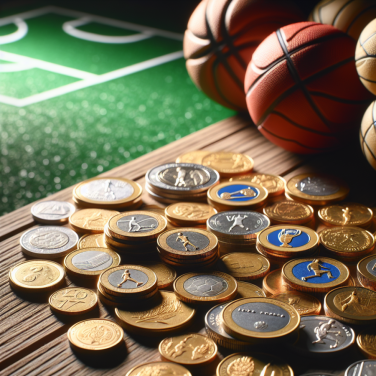Unveiling Table Squash: The Exciting Fusion of Table Tennis and Squash
**The Emergence of Table Squash: An Overview**
Table squash is quickly gaining momentum as a dynamic sport that combines elements from both table tennis and squash. This innovative game takes inspiration from the rapid gameplay of table tennis and the strategic movement and ball control of squash, creating a fresh and exciting challenge for racket sport enthusiasts.
**Understanding the Gameplay: A Hybrid Experience**
In table squash, players use paddles similar to those in table tennis but must adapt to a playing environment akin to a small squash court. The ball, with properties that are a mix between a table tennis ball and a squash ball, demands swift reflexes and precision. Unlike table tennis, the ball can bounce off walls, adding a layer of complexity to the game. Players need to anticipate these rebounds and position themselves strategically to return shots effectively.
**The Rules Blending Two Sports Worlds**
The rules are crafted with a vision to make the game accessible while ensuring it provides enough depth for competitive play. Just as in table tennis, service alternates, but the scoring system is borrowed from squash, with points being scored only by the server. The blend of rules encourages a balanced game that both casual players and seasoned professionals can enjoy.
**Equipment and Court: Tailored for Maximum Engagement**
Equipment manufacturers are starting to create specialized gear for table squash. The paddles are designed with unique surface materials to cope with the varying speeds and bounces of the ball, while shoes need to provide excellent grip for the quick directional changes required on the court. The playing area is slightly larger than a table tennis table, with walls that are used to ricochet the ball, necessitating additional considerations for space in facilities that offer the sport.
**Training and Skills Development: A Whole New Regimen**
Athletes transitioning to table squash must adapt their training regimens to address the demands of the sport. Drills focusing on lateral movement, wall play, and rapid shot transitions are becoming part of routine practice. Reflex training is also of paramount importance, as the ability to quickly respond to unexpected shots is crucial.
**The Competitive Scene: Tournaments and Championships**
A burgeoning competitive scene is taking shape. Local clubs have started to hold table squash tournaments, and there's talk in the sports community about regional and national championships in the near future. The competitive aspect not only adds credibility to the sport but also provides a platform for players to showcase their talents and for fans to engage with the sport.
Read also:
Navigating the Future: Top 5 M2E Crypto Innovations
The Growing Popularity of Table Squash: How It's Captivating Players Worldwide
Table Squash, though a relatively new entrant in the world of racket sports, has seen a remarkable surge in popularity across the globe. Originating as an innovative crossover between traditional squash and table tennis, this game has piqued the interest of sports enthusiasts looking for dynamic and fast-paced gameplay.
One of the primary reasons for the game's expanding reach is its accessibility. Unlike traditional squash which requires a dedicated court often found in fitness centers or private clubs, Table Squash can be played on a modified table tennis table, making it an ideal choice for recreational centers, schools, and even homes. This ease of setup allows for a more inclusive environment where players of all ages and skill levels can participate.
Another aspect that contributes to Table Squash's growing appeal is the minimal equipment required. Players typically need only a small, solid racket and a bouncy ball, which closely resembles a table tennis ball but with slight modifications for enhanced durability and bounce appropriate for the game's unique dynamics.
The game has also made significant inroads in fostering a competitive scene. Tournaments at local, national, and international levels have begun popping up, with players eager to showcase their skills and compete against a wider pool of Table Squash enthusiasts. These competitions have not only helped in promoting the sport but have also contributed to establishing a community of dedicated players who share a passion for the game.
Innovative rules that are a blend of both squash and table tennis principals add to the intrigue of Table Squash. The game inherently requires agility, precision, and strategic play, which are characteristics that are deeply appreciated by racket sport fans looking for a fresh challenge. Furthermore, because it is played on a smaller surface area than a traditional squash court, it necessitates quicker reflexes and a higher level of hand-eye coordination, thereby adding to its excitement and intensity.
Fitness enthusiasts are also getting captivated by Table Squash due to its excellent cardiovascular benefits. The sport enforces continuous movement, ensuring a full-body workout that includes plyometric movements for legs, core stabilization, and upper body conditioning through the swinging of the rackets.
Moreover, the game's adaptability in play styles is a significant factor in its widescale adoption. Whether players are attacking or defending, Table Squash encourages creativity in terms of shot placement and tactics. This flexibility not only keeps the game interesting but also allows it to evolve, as players bring in new strategies and techniques from their experiences in other racket sports.




